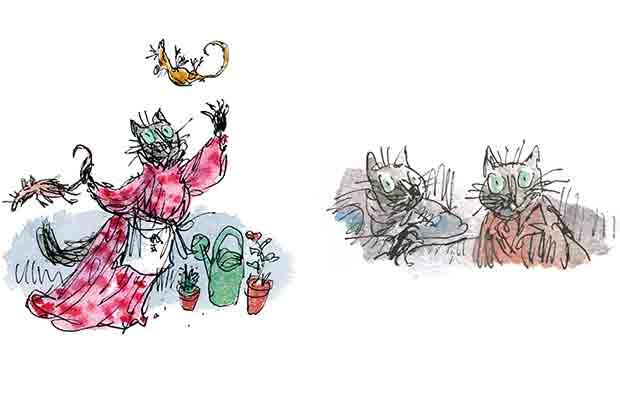The story of the extraordinary boom in children’s literature over the last 100 years could be bookended with a ‘Tale of Two Potters’ — Beatrix and Harry. The adventures of the latter have sold millions, but the foundations of his success were laid by the former, whose series of ‘little tales’ Matthew Denison estimates in his equally condensed new biography, ‘are purchased somewhere in the world every 15 seconds’. That is not bad for an author whose first book, The Tale of Peter Rabbit, came out in 1902 — 40 million copies sold so far, and counting — with neither the benefit of the internet or a movie franchise to spread the word.
Much has been presumed about the effect of J.K. Rowling’s experience as a single mother on her writing, and Dennison focuses on what could be described as Beatrix Potter’s ‘single childhood’. In a Kensington townhouse, with grand holiday homes taken in the Lakes or Scotland, it was certainly not materially deprived — the Potters rarely travelled without a fairy caravan of domestic staff — but ‘like Griselda, the heroine of Mrs Molesworth’s The Cuckoo Clock, published when she was 11, “It was very dull. It got duller and duller.”’ It was also very lonely. Her parents were determined to seal their daughter off from the outside world in a third-floor nurseryland of nannies and governesses, reared on a library of what Beatrix called ‘fat, stodgy books’.
These dour Victorian tomes may have shaped her moral outlook, seen in the essentially conservative nature of the tales, but not her imagination. What inspired her was the world beyond the nursery windows, already noting down the fauna she spotted by the roadside at the age of eight. The young naturalist made many original observations of her own, such as that ‘the British smooth newt does, very rarely, utter an extremely sweet whistling note’.
Such a characterful view of small creatures soon broadened into full-blown anthropomorphic fantasy, as she acquired multiple pets and dragooned small animals into surrogate friendships. A hedgehog named Mrs Tiggy was trained to drink milk from a miniature teacup; she cut her rabbit Peter’s toenails with a pair of garden scissors; and she enjoyed watching her mice play in a toy house right through into adulthood.

But the ‘creative legacy’ of this isolation was first her ‘overwhelming desire’ to paint, with delicate botanical studies soon surpassed by Christmas card designs featuring upright rabbit figures in human clothes. Her inciting impulse was ‘a desire for coin to the amount of £6’ and the brisk commercial nous behind her work is revealed here as much as what she herself termed the ‘dark journey’ of her life.
Like Rowling, Potter exercised complete control over not just the fictional but commercial activities of her creations, specifying the paper stock (‘rough stout paper’, if you please), querying the quality of coloured inks, and scrutinising the position of every full stop — without apology. Her parents had been socially snubbed for coming from ‘trade’ and she was as defensive as them. ‘Publishing books is as clean a trade as spinning cotton,’ she angrily declared to a friend. An early pioneer of branded merchandise, she even made the first ever prototype Peter Rabbit doll herself, ‘using the bristles of a broom for whiskers’, and registered the patent for it under her own name.
Bestselling as Potter was, some of the 24 tales are more enduring than others, as shown by the recently published The Tale of Kitty-in-Boots, illustrated by Quentin Blake. This overworked tale of a prim black cat with a sporty double life, was written, Dennison tells us, just after Beatrix’s father’s death, while she was caring for her widowed mother alongside managing her new farm. Her failing eyesight perhaps accounts for the lack of original illustrations. ‘The experience… had denied her pleasure. The results were unhappy,’ which accounts for it lying unpublished until now.
That unhappiness — self-evident in the unsatisfying narrative — is not improved by the addition of Blake’s familiar scratchy hand. What worked so well for the more cartoonish fantasies of Roald Dahl seems out of place alongside the differently conceived work of Beatrix Potter. She was an artist first and a writer second, and Dennison’s biography reminds us that ‘from childhood her drawing had focused on accurate observation… she had no need to rely on imagination in the vulgar sense’. She liked her cats to look like real cats painted from life (albeit always properly dressed ones), not inky sketches. One cannot help feeling that in regard to this particular tale, like Jemima Puddleduck, her controlling creator might have declared: ‘I wish to hatch my own eggs, I shall hatch them all by myself.’






Comments